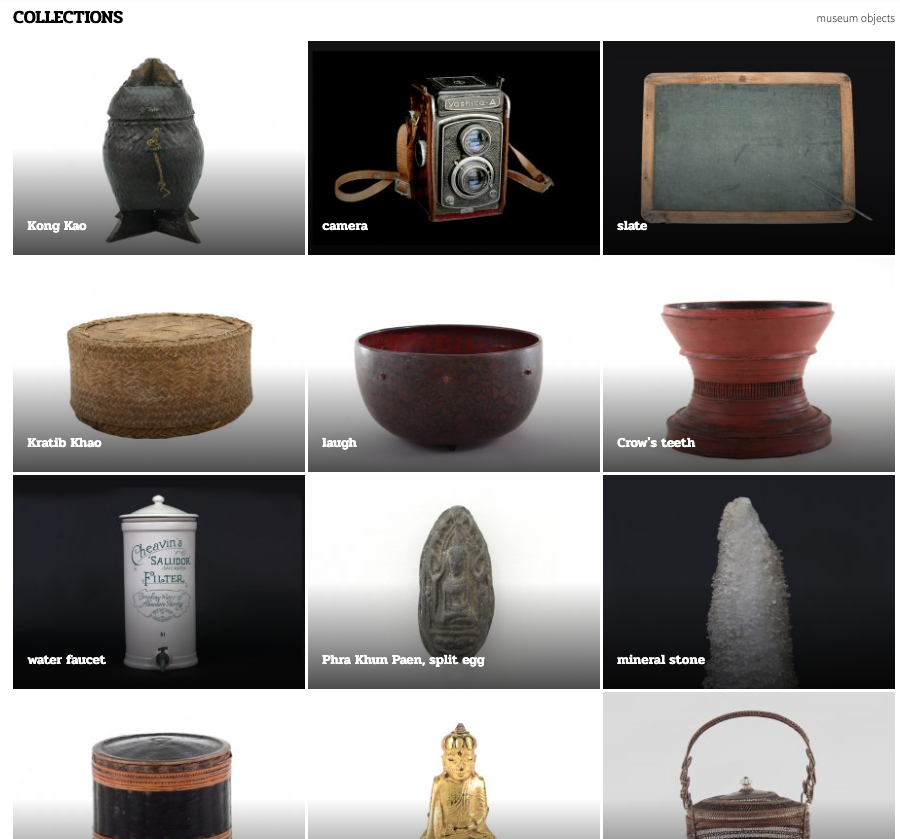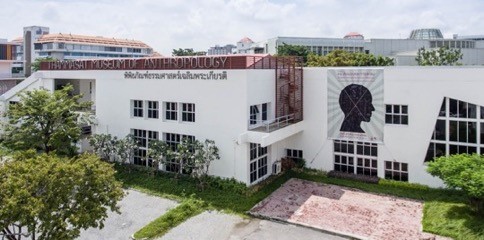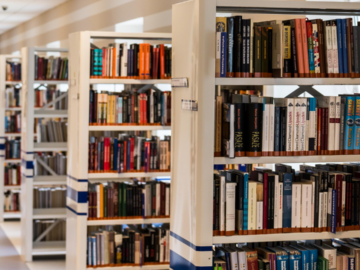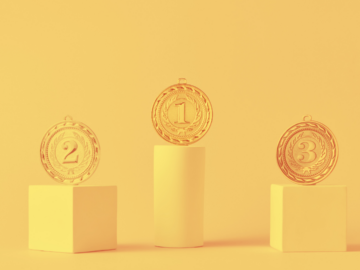Thammasat Museum of Anthropology (known as Thammasat Chalermprakiet Museum) is a project which was initiated by the Faculty of Sociology and Anthropology in 1986 when the faculty received artifacts from Ban Chiang excavation project at Ban Om Kaeo and Ban That in Udon Thani, led by Assoc. Prof. Sumitr Pitiphat during 1972-1974. All antiquities and cultural objects exhibited at the museum were compiled by the Faculty of Sociology and Anthropology from those that already belonged to the faculty and those that were donated.
The commissions of Thammasat Museum of Anthropology are to preserve and exhibit artefacts for studying, researching and circulating knowledge that facilitates the comprehension of different characteristics of humanity and the diversity of their culture and interaction with the world through the observation of cultural artefacts. The preservations are done through the exhibition of museum objects, online exhibition and video, creation of three-dimensional photographs of objects, academic seminar, and documentary.
- Thammasat Chalermprakiet Museum – Facebook
- Thammasat Chalermprakiet Museum – Website (Thai)
- Thammasat Chalermprakiet Museum – Website (English)
Exhibitions: Museum Exhibitions
Thammasat Museum of Anthropology is open to the public with no entry fee. It exhibits cultural heritage from different part of Thailand. The exhibitions include display of folk, regional, and national cultural heritage, both at the museum and as an online exhibition, ad-hoc and ongoing.


Please refer to these websites for more information on exhibitions and events related to cultural heritage:
1. Thammasat Museum of Anthropology – Activities to record and preserve cultural heritage during 2565 (Facebook)
2. นิทรรศการ “มรดกภูมิปัญญาทางวัฒนธรรม” (Intangible Cultural Heritage) และ นิทรรศการ “เจ้าชายน้อย ฉบับลายสือไท ภาษาถิ่นสุโขทัย” (2022)
3. Exhibition “Cultural Heritage of Mueang Phet Craftsmanship” (Feb-May,2022)
4. นิทรรศการ “มรดกวัฒนธรรมเชิงช่างเมืองเพชร” (Feb-May, 2022)
5. นิทรรศการ “มรดกภูมิปัญญาทางวัฒนธรรม” (Intangible Cultural Heritage) – Sep,2022
6. งานสมโภชธรรมาสน์วัดท่าศาลาราม อ.บ้านลาด จ.เพชรบุรี

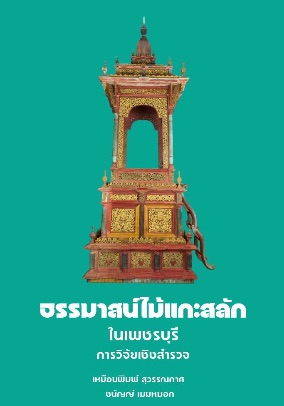
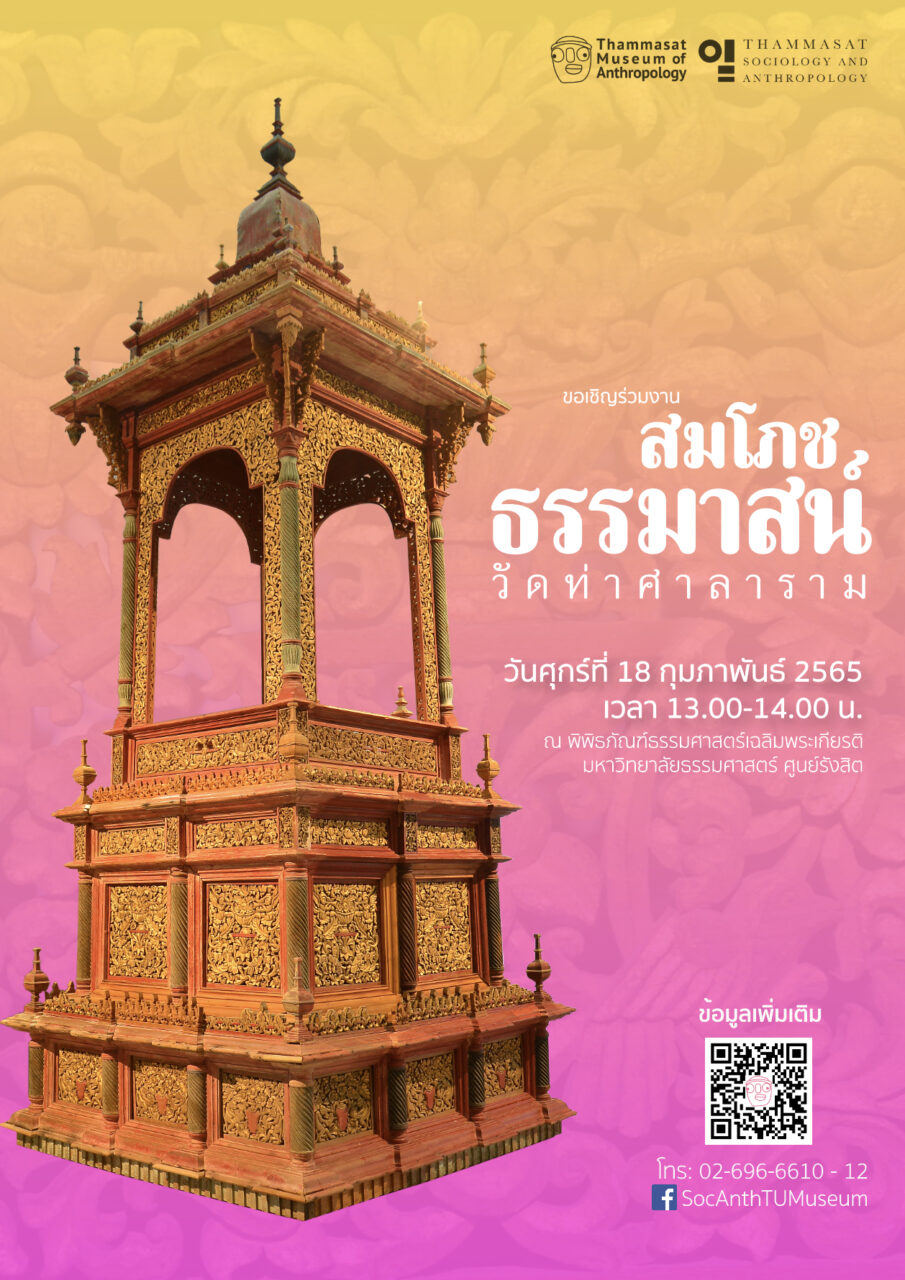
7. งานสมโภชธรรมาสน์วัดท่าศาลาราม – TMA Website
8. โครงการฟื้นฟูเมืองและย่านชุมชนเก่า ร่วมกับกรุงเทพมหานคร (Nov,2022)
Online Exhibitions – Knowledge and Languages Preservation
To preserve other traditions, knowledge, and language, the museum stores and record books, videos, and online seminar onto its website. The book “The Little Prince” (Le Petit Prince) is regarded as “The Most Important Work of the Century of France”, written by Antoine de Saint-Exupéry, 1900-1944, has been translated into over 380 languages in 62 countries. The Thai translation was first published in 1969 by Amphan Otrakul and translated into several other expressions.


The book “Chun Noi” was re-translated into the local Sukhothai language and transcribed with “Lai Sue Thai in the Sukhothai period” by Khiang Chamni from the original “Little Prince” by Ariya Paitoon and “Thao Noi”, Lao version of Si. Saliaw, Sawaeng. Then the author compared it with the original French with the purpose of “cross cultural dialogues” (French, Central region Thai, and Sukhothai which has a unique accent.
In addition to using Sukhothai words and local dialects, the book “Chun Noi” also use Sukhothai fonts “Ram Chak” with the ancient typeface.
Chun Noi – The Little Prince, Sukhothai Dialect Version
Exhibition: Little Prince – Sukhothai Dialect Version – Lai Sue Thai
Online Exhibition: Little Prince – Sukhothai Lai Sue Thai Dialect Version
Le Petit Prince: Books, Collections and Cross-Cultural Dialogues
https://museum.socanth.tu.ac.th/general/the-little-prince-online-exhibition/
Audio Book: Chun Noi – The Little Price, Sukhothai Dialect Edition
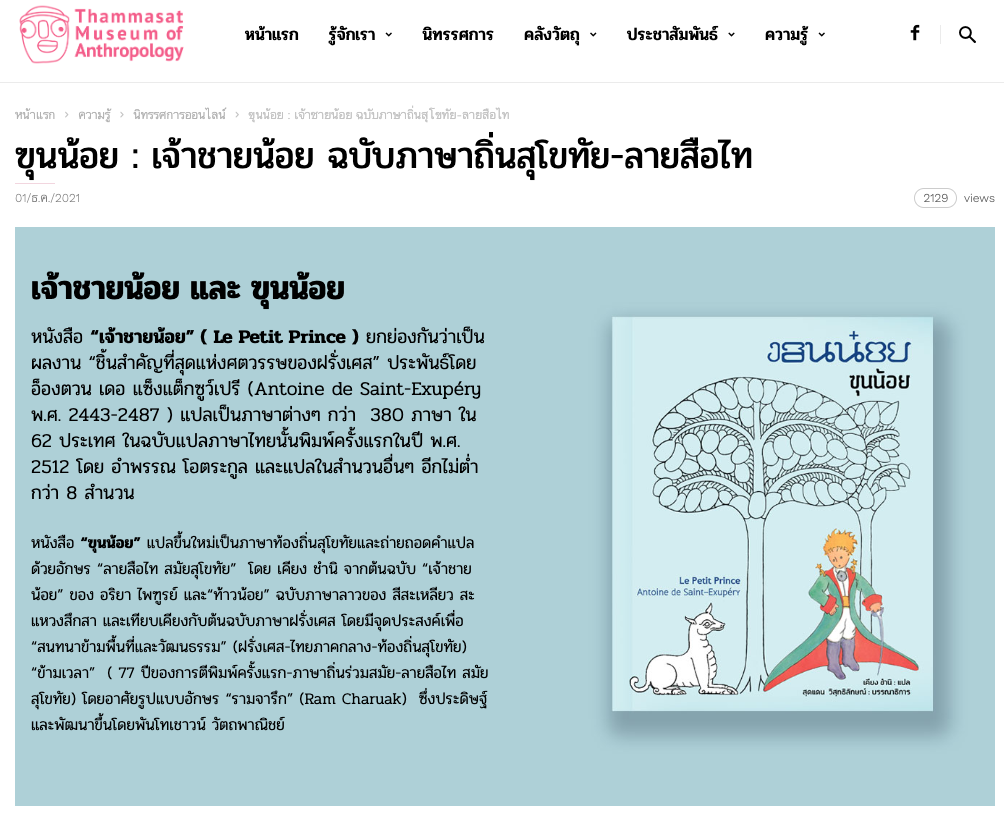
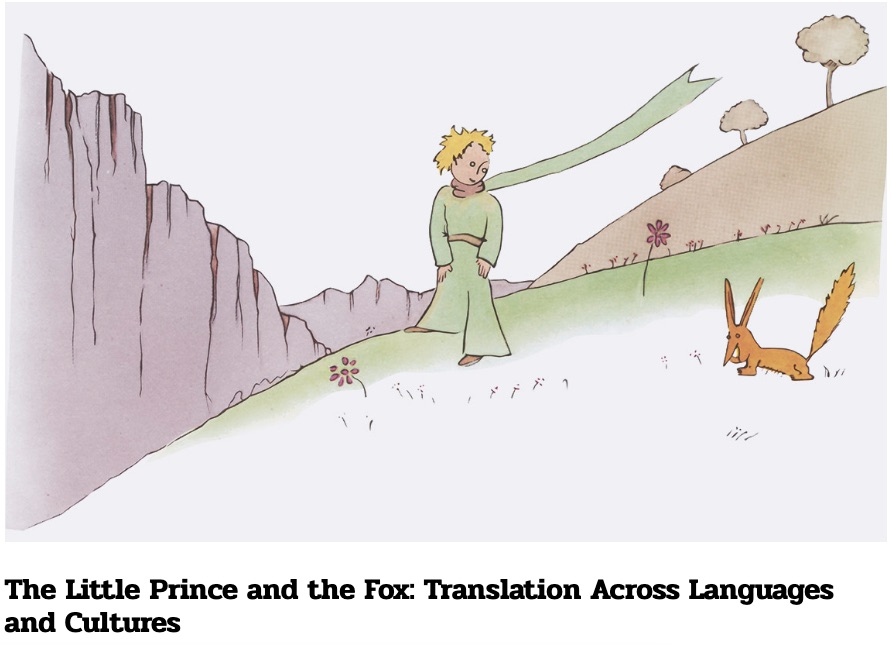
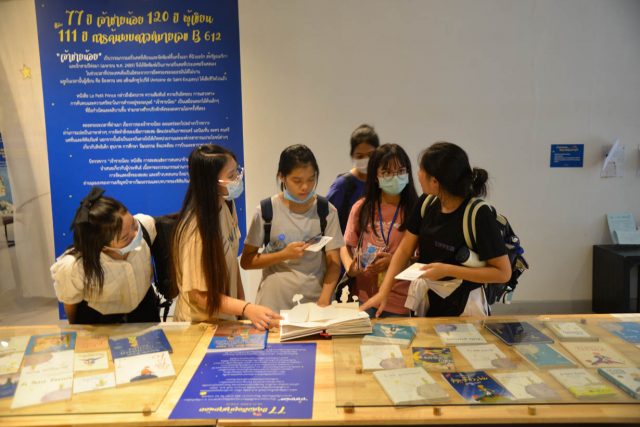
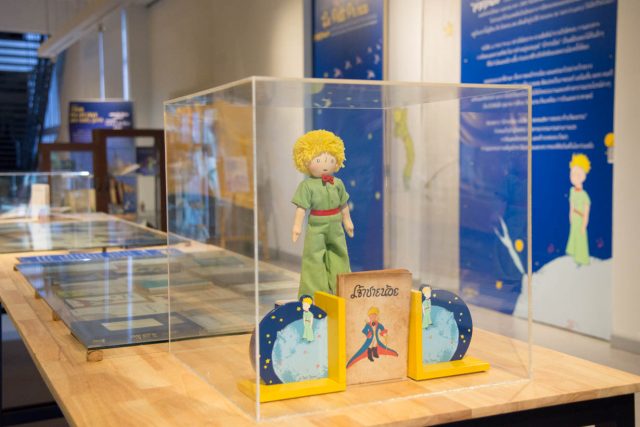
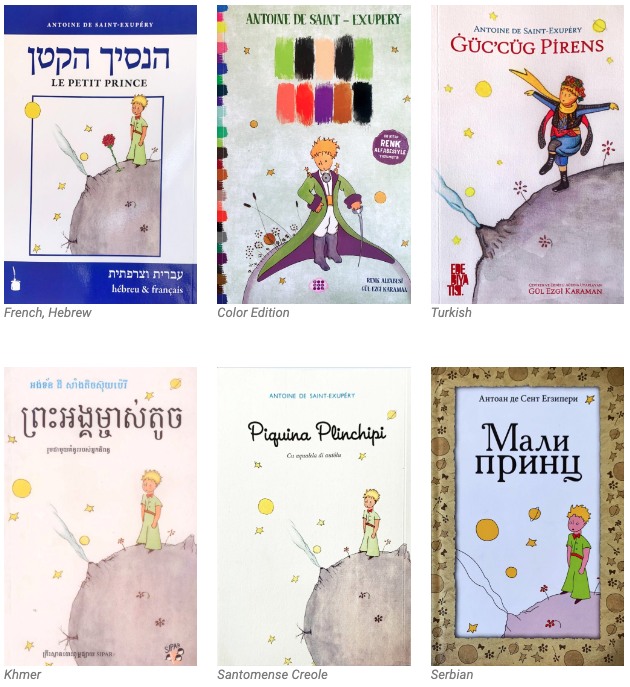

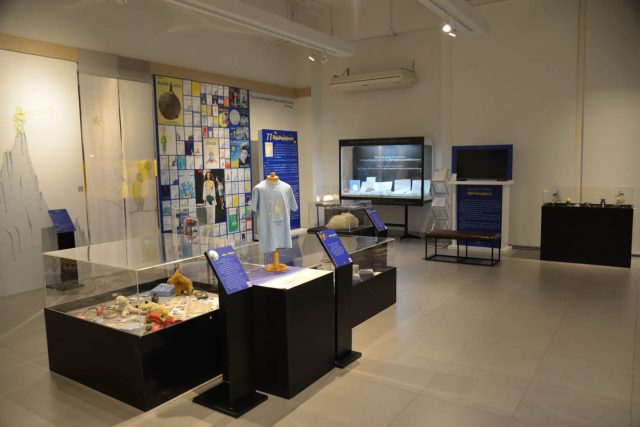
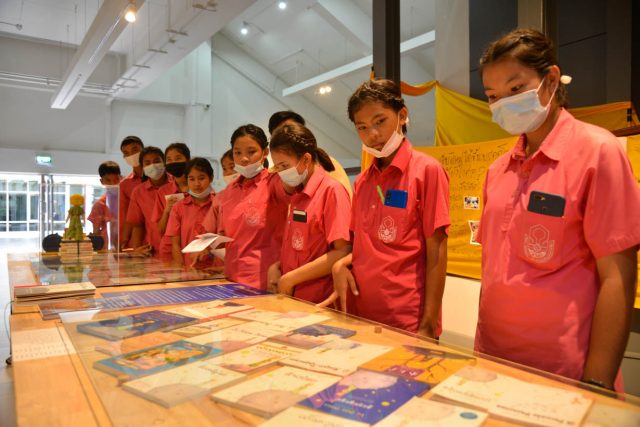
Online Books – Cultural Heritage Preservation of Displaced Communities
The “Mon” people, according to the history, are prosperous people living in the old capital of Myanmar, known as “Raman” people. The immigration of Mon people into Thailand started in the year 1584 AD. Most of the Mon people’s settlements in Thailand are along the rivers such as the Mae Klong River, Chao Phraya River, and provinces such as Nonthaburi, Pathum Thani, and Samut Sakhon.

Mon has its own written and speaking language, influenced by South India script and Thai. The faculty of Sociology and Anthropology, Thammasat University has published a research on “Cultural Heritage: The Creation of Sam Khok “Mon” people in Pathutani Province. The objectives are to understand the heritage of Mon people, especially the ways of living and how their cultures were inherited from generation to generation while they live in Thailand.
Research on “Cultural Heritage: Creation of Sam Khok “Mon” (ชาวมอญ) People
https://museum.socanth.tu.ac.th/update/โครงการวิจัย-มรดกทางวัฒนธรรม-การสร้างตัวตนคนมอญสามโคก-จังหวัดปทุมธานี/
Other videos and online seminars are such as the “Cultural Heritage Knowledge Video (Part 1-4) and many other academic seminars on museums and cultural heritage.
Cultural Heritage Knowledge Video – What is Cultural Heritage?
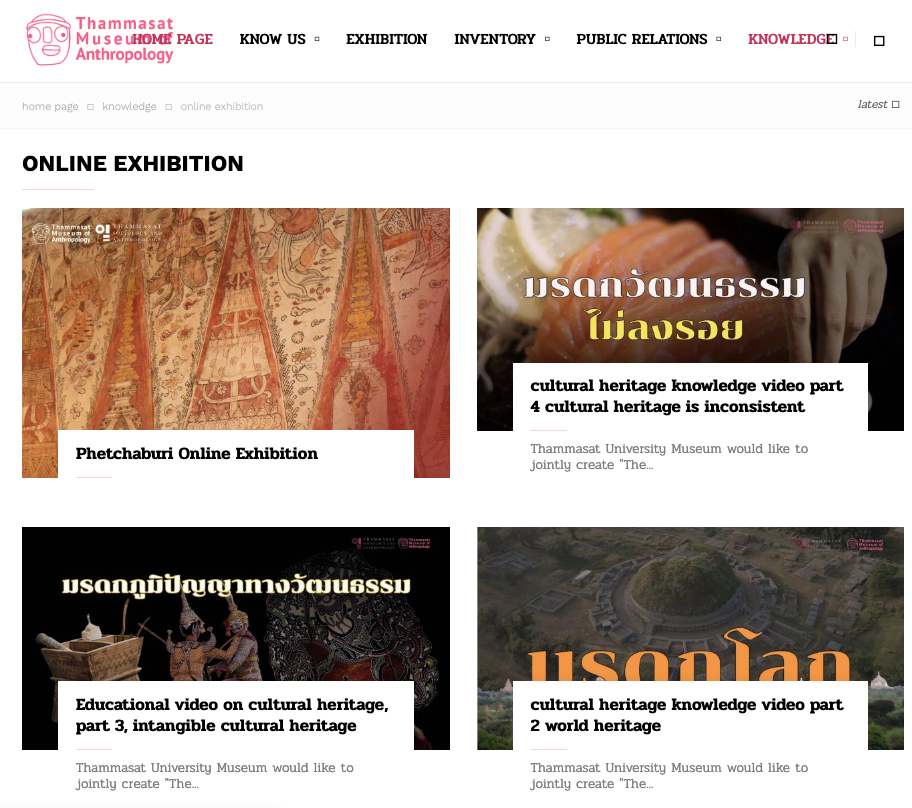
Seminar on current issues in cultural heritage of Southeast Asia:
Academic Seminars
1st Seminar on Current Issues in Cultural Heritage of Southeast Asia – August 3,2021
2nd Seminar on Current Issues in Cultural Heritage of Southeast Asia – August 17,2021
3rd Seminar on Current Issues in Cultural Heritage of Southease Asia – August 31,2021

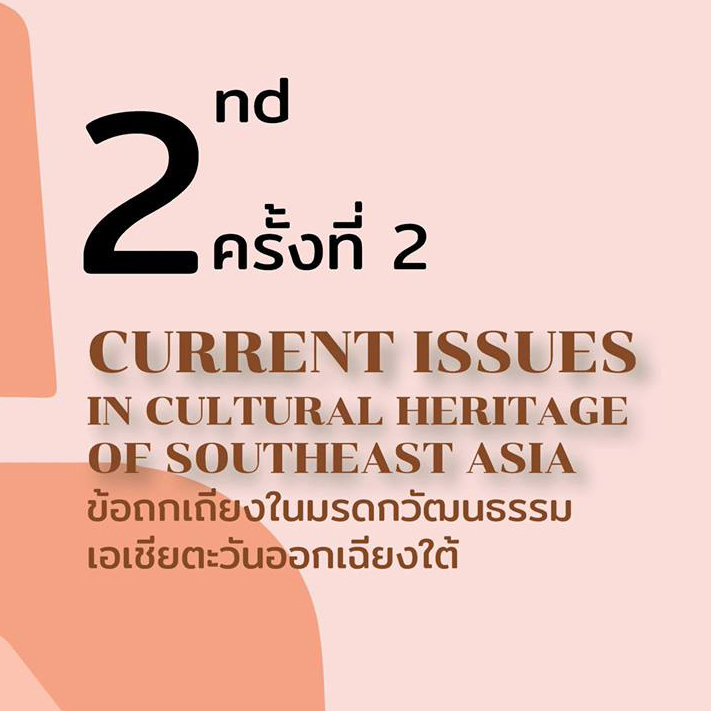

Creating a three-dimensional images (3D model) and online database to record the artifacts and museum objects
Thammasat Museum in collaboration with the Faculty of Architecture and Urban Planning, Thammasat University has implemented a project to integrate applied technology with museum objects, using a three-dimensional image (3D model) to record the artifacts and objects in the museum, creating a database for future public study and research.
The database provides valuable details such as the appearance, shape, cracks, and damages of the objective which not only benefit the preservation and repairing of these objectives, but also help making it more safe and convenient to access and handle the objects to avoid further damages.
Three-dimensional Photographs of Objects
Museum Objects
The key mission of the museum is to preserve cultural heritage through displaying artifacts and objects for study and research. Distinctive features of the Thammasat Chalermprakiet Museum are the variety of over 6,000 objects, the variety of material types, artifacts from many eras and cultures, millions of years old fossils, antiques, tools and utensils of the past society from the “New Stone Age”, technology, rare objects, strange objects, objects related to religious and beliefs, artifacts and collectibles from the past centuries of the peoples in Southeast Asia.
The museum preserves and exhibits its objects and collections through “Open Storage” and “Online Archives” to provide opportunities for students and young generation to understanding the diverse cultural differences of humanity.
“Invite them to learn things and to understand human beings in different dimensions through our inventory”.
